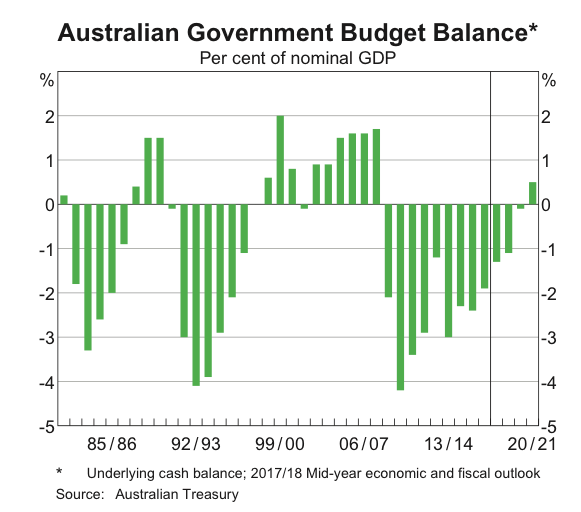Treasurer Scott Morrison will deliver the 2018-19 Budget on Tuesday night and from all accounts a range of upbeat economic forecasts will deliver a deluge of revenue that will fund income and company tax cuts and leave the budget on track for a small surplus in 2020-21. These issues, tax cuts, economic forecasts and the return to surplus, are likely to be the main aspects of the budget.
Economists will, no doubt, spend a lot of time judging how realistic the budget forecasts are that deliver this stream of revenue over the next few years. If there is any ‘guilding the lily’, that is, using unrealistically upbeat parameters for GDP growth, wages, commodity prices and the like, the budget return to surplus and funding of the tax cuts will come into question.
History shows how sensitive the budget numbers are to small changes in economic conditions. By way of example, a US$1 a tonne price variance for iron ore changes government tax revenue by around $420 million a year. US$10 a tonne, clearly, is worth close to $17 billion over the four years of the budget forward estimates.
It is interesting that the budget tax cuts are heavily reliant on Chinese importers still buying a lot of iron ore and paying a high price for it.

There is a bit of hard economic data next week too, with retail trade and housing finance the keys.
Source: Treasury, RBA













